With more than 90 million, India has the largest population of the tribal people in the world. The tribal peoples are also known as “Adivasis”, which means “the original inhabitants of a given region”. Tribals are the poorest community in India, and are still dependent on agriculture, fishing and hunting. Each tribe has its own unique custom, dress, language and jewellery. 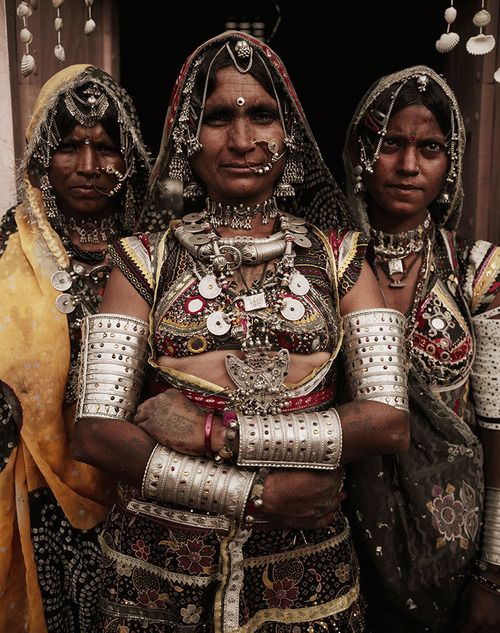 The major population of Indian tribes are found in Chhattisgarh, Orissa, Jharkhand, Madhya Pradesha and North East India.
The major population of Indian tribes are found in Chhattisgarh, Orissa, Jharkhand, Madhya Pradesha and North East India.
Chhattisgarh: Situated in the heart of India, it is well known for its cultural heritage, natural diversity and tribal community. Bastar is the largest tribal district of Chattisgarh and Gond tribes is the most prominent among them. The Gond tribes include the Abhuj Maria, Baiga, Dhurvaa, Korba and Muria tribes.
Orissa: The state has the highest population of tribals in India. The major tribes of the state are Gadabas, Juangs Kondhs, Koyas, Oraon, and Santhals. Chhattisgarh is the neighbor state of Orissa, so Gond and Baiga tribes are also found in Orissa.
Madhya Pradesh: The main tribal groups in Madhya Pradesh are Baiga, Bhil and Gond. State districts like Dhar, Jhabua and Mandla have more than 50 percent tribal population.
North East States: Also known as seven sisters of India, the north eastern states of India have a large tribal population. The tribal chiefs enjoy power and status in the region. The main tribes of north east states are Bamons, Garo, Khasi, Maram, Monpas, Naga, Reang and Tripuri.
Tribal jewellery in India has a rich history and is usually made out of locally available materials. Jewellery made from bones, clay, feathers, wood and crude metals has a rustic and earthy charm. As each tribe has its own indigenous jewellery craft, here is a list of some of the more prominent tribes, with a brief details of their jewellery.
Angami
The Angami tribe is one of the largest Naga tribes. The Naga people are a conglomeration of 17 major tribes and sub-tribes and belong to the extreme north eastern part of India. Angamis are considered as among the most ecologically conscious tribal community in India.
Both men and women enjoy wearing beautiful ornaments. Beads, pendants, bangles and bracelets are worn by both sexes.
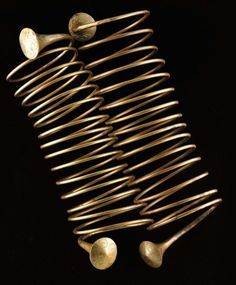 Angami bracelet made from bronze wire
Angami bracelet made from bronze wire
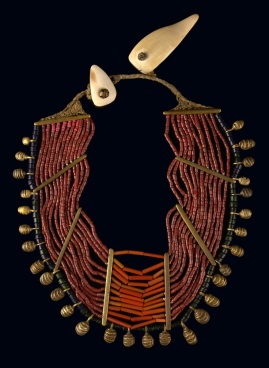 Angami necklace made of metal, bone and beads
Angami necklace made of metal, bone and beads
Bhil
They are the largest tribe in the entire South Asia and the most widely distributed tribal group in India. Bhils belong to the race of the pre-Aryans. The name ‘Bhil’ is derived from the word villu or billu, which according to the Dravidian language, means Bow. Bhils are also mentioned in the great Hindu epics of Mahabharata and Ramayana.
Bhils use white metal and silver brass in their jewelries. They are renowned for ornaments embellished with beads, chains, coins and metal-mesh. The tribe has a huge range of amulets, anklets, bangles, bracelets, earrings, hairpins and necklaces. Some of the popular jewellery worn by Bhil women are bichiya, dhimmna, beenti, oganiya, pejania, hansli, kasla, haar, bidi, tagli and kamkada.
Bhutia
Majority of the Bhutias are concentrated in the valley of north Sikkim. Bhutia tribes are of the Tibetan origin and migrated to Sikkim around 16th century. They are also known as Lachenpas and Lachungpas in the northern part of Sikkim.
The Bhutias are renowned for beautiful jewelry. Bhutia jewelry is unlike most traditional Indian jewelry and is heavily influenced by Tibetan and Chinese jewelry. The tribe uses gold, silver, coral, turquoise, and dzi beads in their jewelry.The jewellery items used by the Bhutia women are known as Yencho (earring), Khao (necklace), Phiru (pearl ornament), Diu (gold bangle) and Joko (ring). 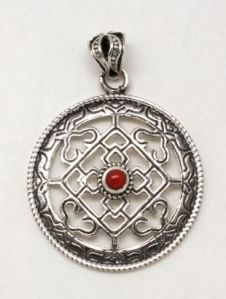
Bhutia Silver Pendant
Dzi beads are made of stone and are kept as amulets in many Asian cultures, including Tibetan. The original Dzi beads were made of natural agate. The small red spots found on the white part of the dzi bead are known as “blood spots” and form because of cinnabar contained in the stone. These are rare and make the bead more valuable. The oldest dzi beads that have been found date back to 2000 B.C. Dzi beads have a series of waves, geometric shapes, and lines that decorate them. They stand out in stark ivory white against the bead which is usually black or brown. These swirls and lines are thought to be symbolic patterns. The “eyes” on the dzi bead, or the circular shapes each one has, differ in number and shape from bead to bead and represent different things. Possibly they were meant to ward off the evil eye (almost like turning the gaze back). The most “eyes” found on an ancient dzi bead is twelve and any more is considered non-traditional and possibly fake.
Dhokra
The Dhokra Damar tribes are the traditional metalsmiths of West Bengal. Their technique of lost wax casting is named after their tribe and is known as Dhokra metal casting. The tribe is a nomadic tribe and extends from Jharkhand to West Bengal and Orissa. 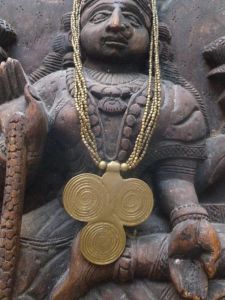 Dhokra is non–ferrous metal casting using the lost-was casting technique. This sort of metal casting has been used in India for over 4,000 years. One of the earliest known lostwax artefacts is the “dancing girl of Mohenjo-daro” found in excavations of the Indus Valley civilization.
Dhokra is non–ferrous metal casting using the lost-was casting technique. This sort of metal casting has been used in India for over 4,000 years. One of the earliest known lostwax artefacts is the “dancing girl of Mohenjo-daro” found in excavations of the Indus Valley civilization. 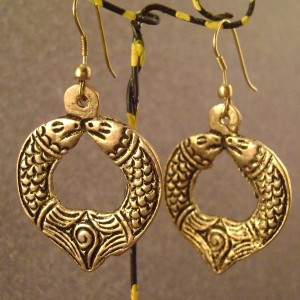
Dhokra Earrings
Gond
Gonds are one of the largest tribal group in the world and is found in the Gond forests of central India. They are widely spread in Madhya Pradesh, Chattisgarh and parts of Maharashtra, Andhra Pradesh, and Orissa. The name by which the Gonds call themselves is Koi or Koitur. Gonds are mentioned in almost all historical books of India. In the 12th century they ruled several parts of the central India and their kingdom survived till late 16th century. Their kings built a number of forts, palaces, temples, tanks and lakes during the rule of the Gonds dynasty.
Though men sport only a few items, women used to wear silver jewellery which could weigh over 2 kg. The Sakri, heavy rounded bands worn around the neck by women weighed about 500 grams while the ‘panjan’ or anklet weighed 250 grams each. The ‘kambar pati’ or waist band weighed about 1 kg while the arm bands or ‘dand kadias’ weighed 250 gm each. The tribal families used to obtain silver from artisans who came looking for horns of wild animals and cattle skin. They also used to make ornaments from copper, wood, cane, grass, peacock & birds feathers and wild flowers.
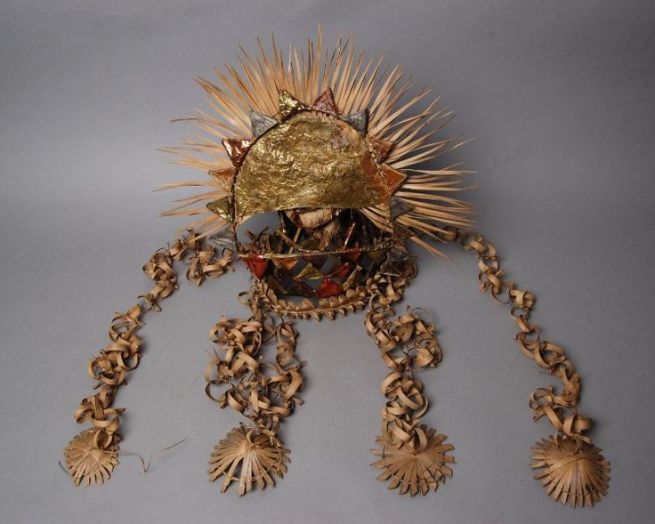 Gond marriage crown made of wild-date leaves, cane and tin-foil
Gond marriage crown made of wild-date leaves, cane and tin-foil
Khasi
The Khasi tribe is mainly found in the state of Assam and the Khasi Jaintia hills in Meghalaya. They are called by the different names such as Khasi Pahris, Khuchia, Kassi, Khashi and Khasa. Khasi are the predominant tribals in the state of Meghalaya. The Khasis are believed to immigrant tribes who came from Myanmar, and settled down in the plains of east Assam. The Khasis had their own kingdom, until the Britishers exercised control over them.
The Khasis pendant is called “Kynjri Ksiar” and is made of 24 carat gold. The Khasis also wear a string of thick red coral beads round their neck called “Paila” during festive occasions. 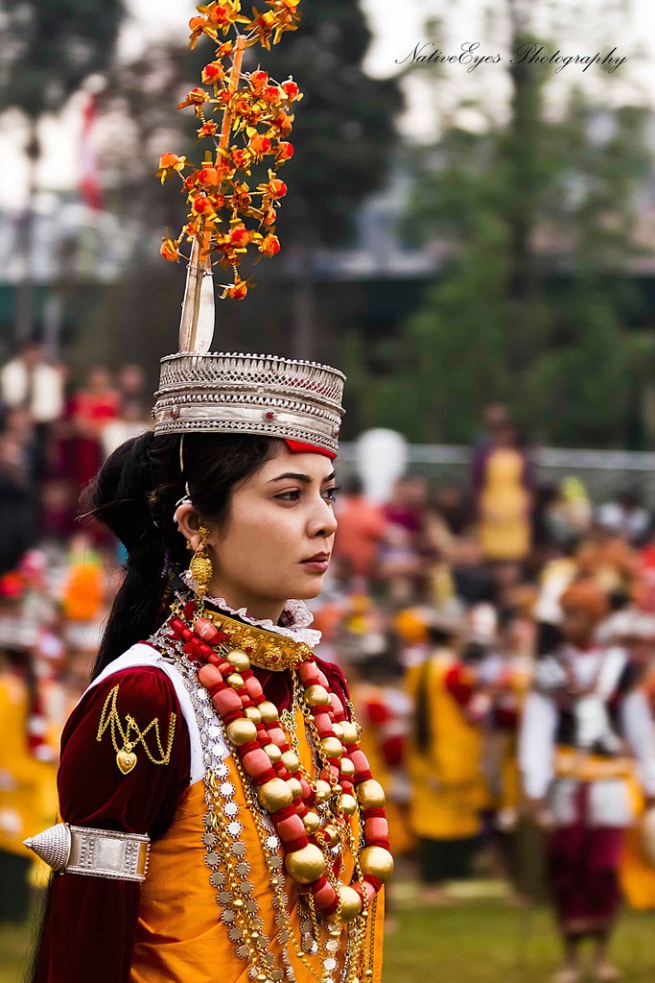
Santhals
The Santhals are the third largest tribe in India. They are mostly found in the states of West Bengal, Bihar, Orissa, Jharkhand and Assam. Santhals belong to the Pre Aryan period.
They wear a variety of jewellery made from natural resources and also from bell-metal and brass, especially anklets and bracelets. They also use wild grass to make ornaments. The jewellery has motifs of berries, leaves and flowers. Women also wear a kardhani for the waist and chudha (bangles) for the wrists. Tikuli is worn by women on their foreheads. 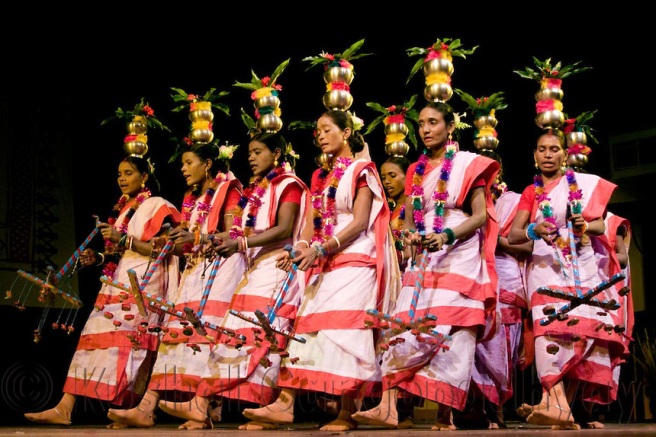
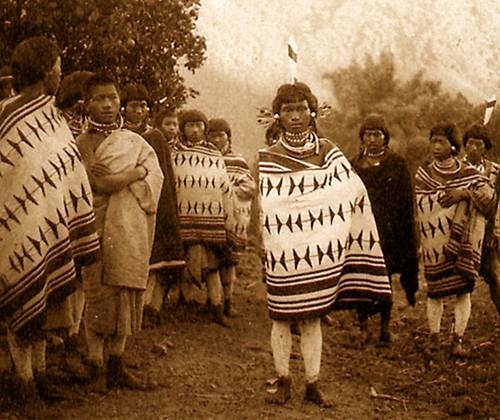
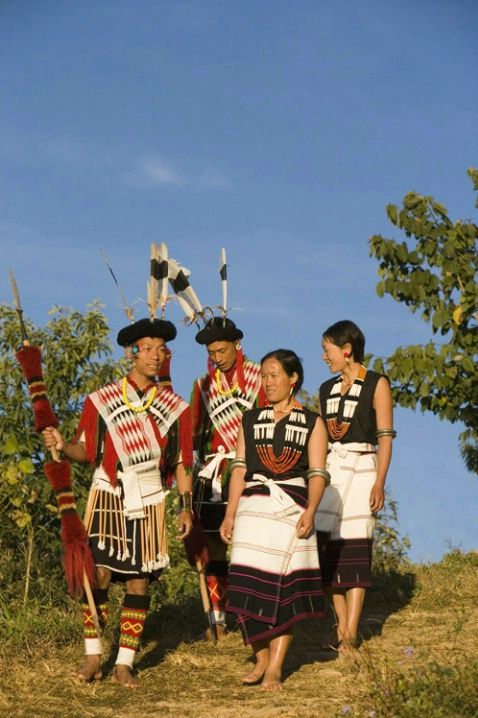
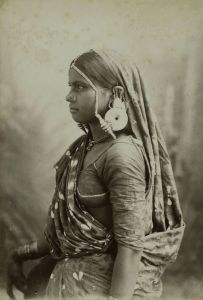
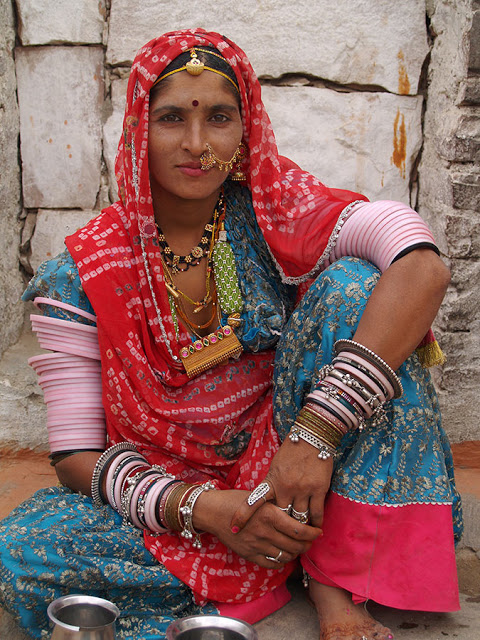
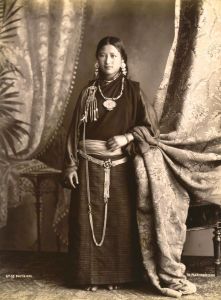
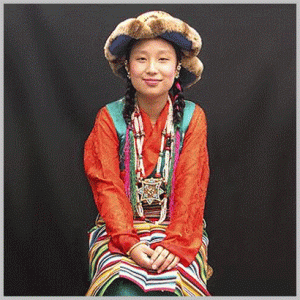
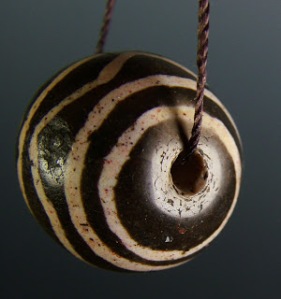
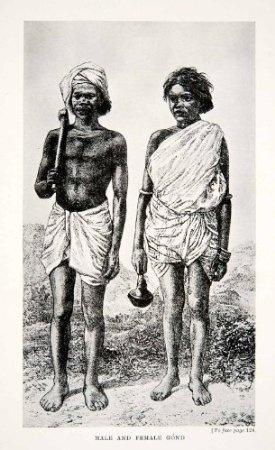
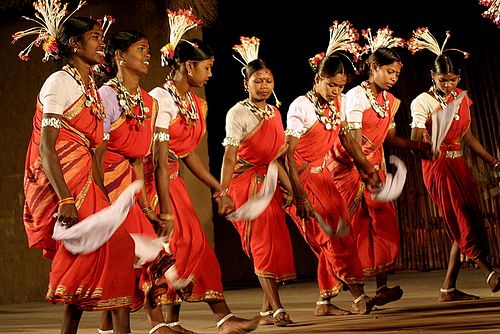
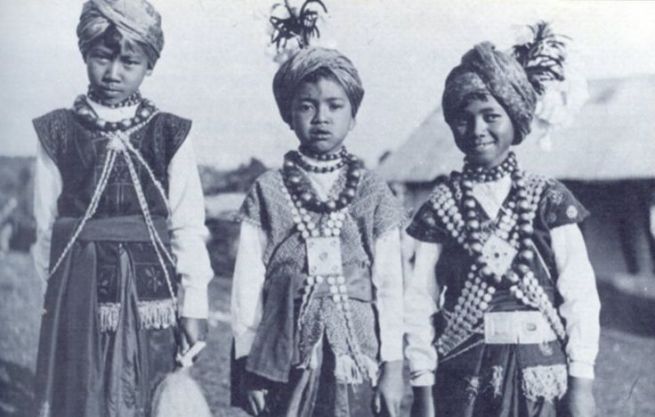
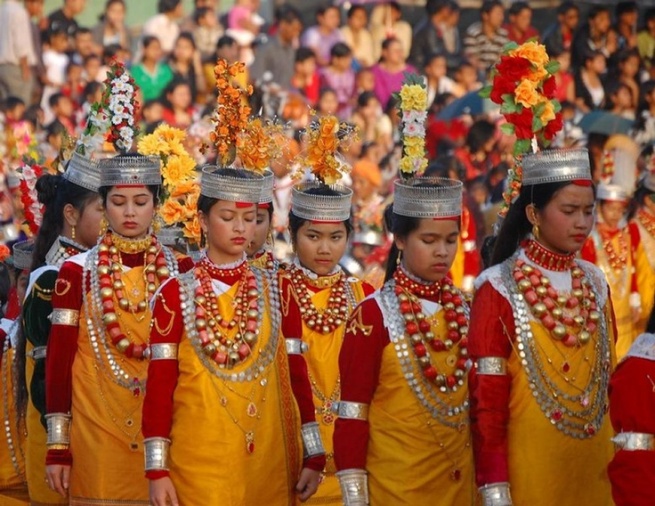
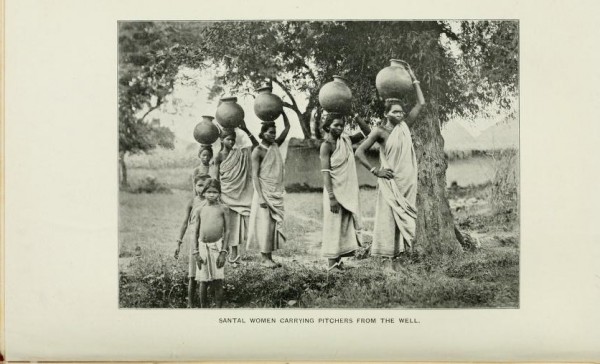

Thank you so much for your lovely words
LikeLike
I loved learning about all of the different regions of India and how the details of their styles change throughout the country. I think it’s wonderful you’re sharing this information to preserve the cultural heritage of India. We still need culture to help express ourselves as individuals and identify with a community.
LikeLiked by 1 person